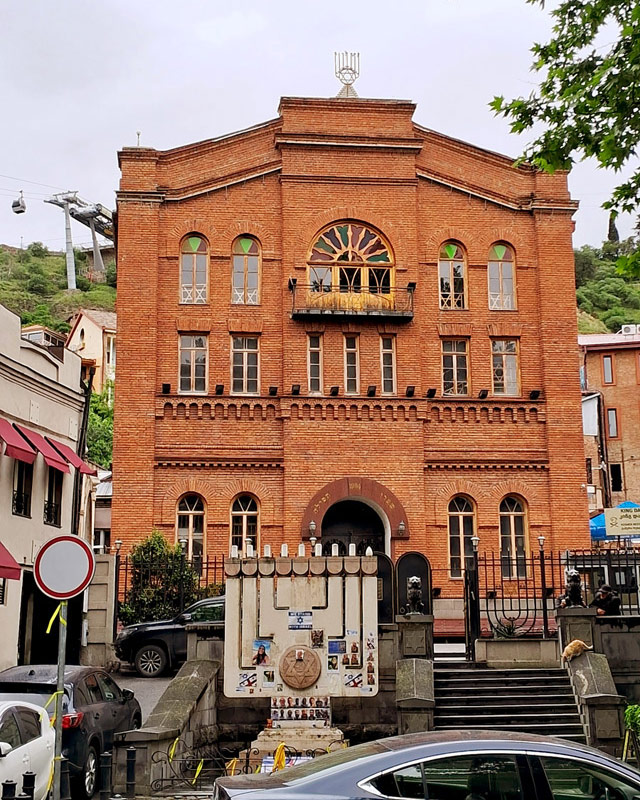The Great Synagogue of Tbilisi, also the synagogue of the Jews from Akhaltsikhe, is the main synagogue of the Jewish community of Tbilisi, located in the area of old Tbilisi. The name is given after the synagogue in the city of Akhaltsikhe, where its founders come from. The Great Synagogue of Tbilisi was built in 1904-1913. The architect gave the new synagogue a Moorish-eclectic form with a vaulted ceiling and lighting.
Surrounding the synagogue are Jewish shops and establishments, together making up a typical, traditional Jewish quarter. Nearby, in a leather alley, there is a second functioning synagogue (smaller). Tbilisi also has a third synagogue, the so-called “Dome Synagogue,” on Anton Catholicos Street, which was built at the beginning of the 20th century. Since 1932, it has housed the Historical and Ethnographic Museum of the Jews of Georgia.
Jews are among the oldest inhabitants of Georgia. In the 6th century BC, some of the Jews expelled from Jerusalem came to Georgia and settled here, namely in Mtskheta. Thanks to the loyal and friendly attitude of the Georgians, soon the densely settled Jews of Mtskheta were able to build their shrine – a synagogue. Later they settled in other territories of Georgia, including Tbilisi.
Museum of History of Georgian Jews and Georgian-Jewish Relations was founded on November 30, 1932. Since 1932, the museum was housed in the building of the Jewish cultural center, and in 1940 it moved to the so-called “Dome Synagogue”. In 1951 the museum was closed.
On November 30, 1992, by decision of the Georgian government, the museum was restored with the financial support of the Cartu Foundation and named after the famous rabbi and public figure David Baazov, and the exhibition was again housed in the building of the former Dome Synagogue. Among the exhibits, an ancient slab found in the city of Mtskheta with an inscription in Aramaic, as well as costumes of Jewish brides of the 19th century, stand out.



















































